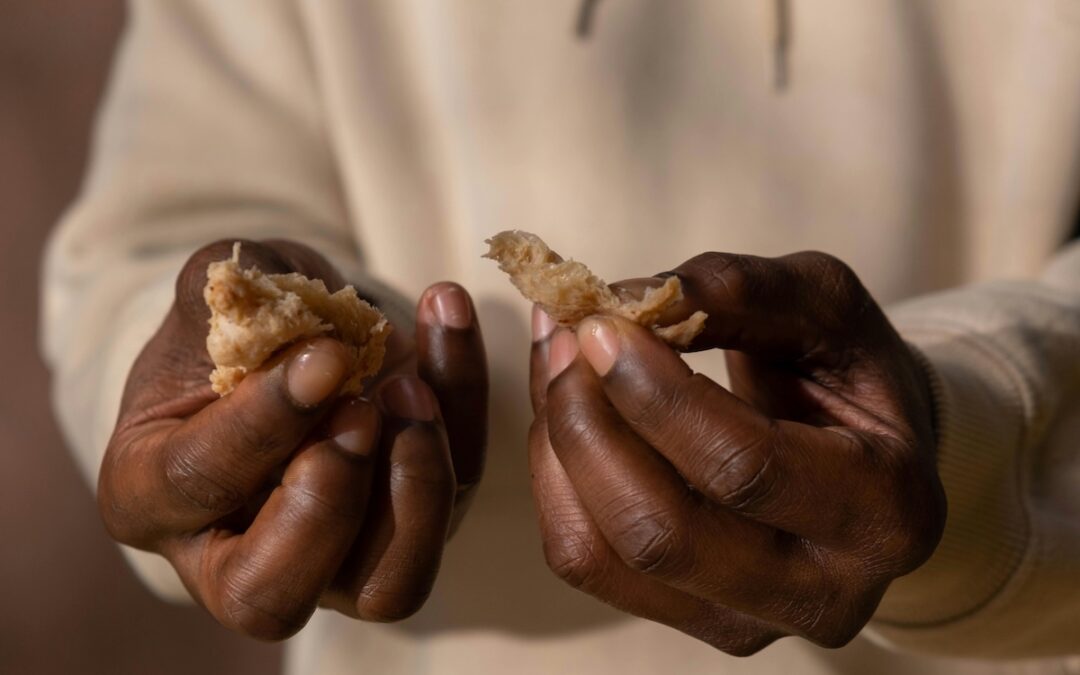Reflections on Luke 24:13–35
by J. Chris Sanders
Two disciples are walking the wrong direction—away from Jerusalem, away from the trauma of Friday’s cross, away from the mystery of Sunday’s empty tomb. One is named Cleopas. The other goes unnamed, as if we’re meant to see ourselves in their place.
They walk in sorrow and disappointment.
“We had hoped that he was the one to redeem Israel.” (Luke 24:21)
That phrase—we had hoped—says everything. It’s the language of grief, of expectations crushed, of trying to make sense of a story that didn’t end the way you thought it would.
And yet, Jesus shows up. Not in dazzling power. Not with divine thunder. He appears quietly, humbly—on foot, as a stranger.
“What are you discussing as you walk along?” (v. 17)
They don’t recognize Him. Their eyes are “kept from seeing,” but not by accident—by grief, by confusion, by the sheer dissonance of death and resurrection coexisting. It’s hard to see the hope of Easter when you’re still living in the shadow of Friday.
They tell their story. About Jesus, the prophet mighty in word and deed. About how their leaders handed Him over. About how He was crucified. About the women who went to the tomb but found it empty. About angels who said He was alive—but they don’t seem convinced.
They have the facts. But they’ve lost the frame. They see pieces of the puzzle, but not the picture.
Jesus listens. Then He teaches.
“Was it not necessary that the Messiah should suffer these things and then enter into his glory?” (v. 26)
He walks them through the Scriptures—Moses, the prophets, the whole long arc of God’s redemption. He helps them see that the cross was not the failure of the story, but its fulfillment. That suffering was not the end, but the passage to glory. That everything they feared might be meaningless has already been caught up in God’s mission.
Still, they don’t recognize Him. But their hearts are burning.
They reach the village. It’s late. They invite Him to stay. He accepts. And around the table, everything changes.
“He took bread, blessed and broke it, and gave it to them. Then their eyes were opened, and they recognized him.” (vv. 30–31)
This is the moment. The hope they had buried now breaks through like sunlight at dawn. And then—He vanishes.
But that’s not the end. It’s the beginning.
“Were not our hearts burning within us while he was talking to us on the road?” (v. 32)
Their hearts had known before their eyes did. And now, with recognition comes action. They don’t wait. They don’t rest. They return to Jerusalem that very hour—back to the others, back to the story, back to the mission.
This is the strange power of Hope. Not optimism, not fantasy, not wishful thinking. Hope is the fire that rises when you realize the story isn’t over. That you’re not alone. That Christ has been with you even in your walking away.
Hope doesn’t erase sorrow, but transforms it. It takes the same road and makes it holy.
Scholar Elaine Pagels, in The Gnostic Gospels, notes that early Christians understood the risen Jesus as appearing “in another form.” Not always immediately recognizable. Not just physically returned, but spiritually transformed. Pagels draws parallels between this Emmaus story and John 20, where Mary mistakes Jesus for the gardener. These resurrection appearances aren’t about spectacle. They’re about intimacy. Jesus reveals Himself not through power plays, but through presence—in Scripture, in story, in bread broken and shared.
For Pagels, and for many early followers, resurrection wasn’t simply about defeating death. It was about encountering a transformed presence that opens our eyes and reorients our lives. The miracle isn’t just that Jesus is alive. It’s that we’re invited to see Him anew—in acts of grace, in strangers who walk beside us, in our own hearts that burn.
This is how hope works. It rarely announces itself with trumpets. It sneaks up on us, disguised as a question, as a guest, as a meal. Then suddenly, everything looks different.
Jesus could have revealed Himself at any point on the road. But He waited until the table. Until they had welcomed Him in. Until He could bless the bread, break it, and give it to them.
Hope is often born in relationship—through hospitality, through conversation, through opening our lives to something—or someone—we don’t yet understand.
If you’re walking away from something right now—faith, community, clarity—this story is for you. If you feel like you’re stuck in the middle of a narrative that makes no sense, if your prayers feel unanswered and your hopes feel spent—this story is for you.
Jesus still walks roads like this. He still listens. He still reframes the story. He still sits at our tables.
And when he breaks the bread, hope breaks in.
You don’t have to stay in Emmaus. You don’t have to live in the “we had hoped” of yesterday. Like the disciples, you can turn around. You can go back to the story. Back to the people. Back to the calling.
Because the road isn’t over. In fact, the real journey may just be beginning.
Hope is not wishful thinking.
It is the moment you recognize Jesus beside you—whether He’s breaking bread or walking quietly at your side.
It is the fire that burns when truth returns.
It is the choice to rise up and go back to the place you left behind—because what you feared was lost is already being redeemed.

